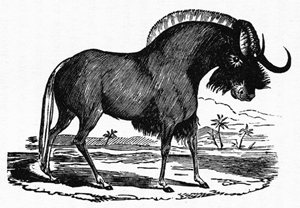 One of the basic tenets of the science of zoology is to establish, as precisely as possible, the natural ranges (= distributions) of animals. From a conservation point of view, the higher the quality of this information the better equipped scientists and conservationists will be to measure and monitor the impacts of man-induced changes, driven by an ever-increasing human population, that affect the global populations of many species, and also to research and implement actions to prevent or ameliorate such impacts.
One of the basic tenets of the science of zoology is to establish, as precisely as possible, the natural ranges (= distributions) of animals. From a conservation point of view, the higher the quality of this information the better equipped scientists and conservationists will be to measure and monitor the impacts of man-induced changes, driven by an ever-increasing human population, that affect the global populations of many species, and also to research and implement actions to prevent or ameliorate such impacts.
Importantly, good quality distributional information enables sound guidelines to be drawn up to assist modern attempts to re-establish populations of animals, where these have been exterminated through man’s activities. The re-stocking of parcels of land with larger mammal species that formerly occurred there is commonplace today, this usually for the purpose of establishing new, or expanding existing, protected areas (national and provincial parks and nature reserves), private nature/game reserves and commercial game farms. Since this process (called ‘re-introduction’) is regulated in South Africa, good information on the estimated historical incidence (occurrence and/or distribution) of the larger, indigenous mammals is crucial for the drafting of national and provincial policy, legislation and implementation guidelines for their translocation in South Africa. Such information is also useful for the conducting of Strategic Environmental Assessments and Environmental Impact Assessments.
The compilation of realistic distribution maps for the larger mammals in 'South Africa', is somewhat constrained by the fact that prior to man-induced changes having a negative effect on the natural populations of the larger mammals, especially from about the early part of the 1700s, no systematic surveys of mammal distribution were conducted. By the time such surveys started, from about the mid-1900s, transformation or degradation of the habitat of the larger mammals had already reached significant proportions, and direct and indirect persecution of the many species by hunters and stock-farmers had exacted a terrible toll on their populations. By the latter part of the 1800s, two larger mammal species were already extinct, and several others were locally extinct. Consequently, modern attempts to establish the historical ranges of the region's larger mammals depend entirely on scraps of information, from a variety of uncontrolled sources, and of greatly varying quantity and quality. Nevertheless, this is all that is available and it must suffice for the purpose.
Various attempts to investigate the historical incidence of the larger mammals in southern Africa are briefly mentioned in Attempts to estimate the historical ranges of the larger mammals in ‘South Africa’ and Books with detailed information for parts of ‘South Africa’.
Return to the main menu.
Attempts to estimate the historical ranges of the larger mammals in ' South Africa'